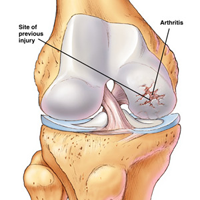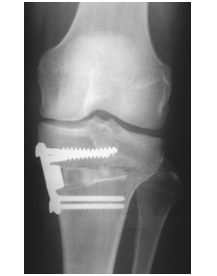In India, today we have more number of elderly people than ever before. According to the latest estimates available, more than 5% of our population is aged above 65 years (UNICEF.org, India, Wikipedia.org). In the year 2000, 4.5 crore people in India were above 65 years of age and this number has increased to 5.8 crore in 2010. Moreover, the number of people above 65 years of age is expected to increase to 6.5 crore in the year 2015 and 7.6 crore in the year 2020. Automatically therefore, the diseases more commonly seen in the elderly people are also increasing proportionally.

According to the data published in the Indian Journal of Community Medicine in the year 2007, more than half of all people in the age group 67- 74 years suffer from arthritis. In the same research, it was reported that, almost all people beyond 85 years of age suffer from some form of arthritis or other. According to another survey ‘TNS Arogya 2006-07’ by an ISO accredited independent market research agency, conducted in 16 cities in India, including Nagpur, it was estimated that there are 7.8 crore people with osteoarthritis in India. This data was corroborated by World Health Organisation data which estimated 7 crore people with osteoarthritis in India.
What happens in knee arthritis?
In simple terms, 'arthritis' or 'osteoarthritis' is a disease condition where in, the normal smooth bearing surface of the knee-joint is damaged or lost. This condition produces pain and sometimes deformity, which in turn lead to loss of function and finally disability and dependence. The various common causes of knee arthritis include age related wear & tear (osteo-arthritis), wear & tear due to extra demand (e.g. obesity), injury to the knee (contact sports, accidents), inflammation (rheumatoid arthritis) and others.

Pain is the most important symptom. Pain may be accompanied by swelling. Because of pain, there is loss of motion (stiffness) and restriction of activity. As the patient experiences pain, there is gradually restriction of outdoor activities first, and eventually patient becomes house-bound. There is pain on simple activities like walking and climbing stairs. It becomes extremely difficult to sit on the ground or get up from a chair. In the later stages even house-hold activities like bathing, cleaning and toilet become painful. In some patients there is also bone damage, leading to bow-knees or knock-knees. There is a feeling of loss of balance and loss of confidence. These patients become dependent on spouse, children, relatives or neighbours. Thus there is dependence on others and independence is lost. Dependence is associated with disability and finally the patient becomes handicap even though he or she may be otherwise mentally and physically healthy.
WHAT IS THE TREATMENT OF ARTHRITIS?
Medical / Conservative treatment of knee arthritis
In the earlier stages of arthritis, pain relieving medicines have a very important role. However, taking pain killer medicines over a longer period are associated with major side effects. Thus pain killer medicines must be administered with due care; especially in arthritis, as some patients may need to take these medicines over a longer period. Physicians, who regularly look after patients with knee arthritis, commonly prescribe cartilage preserving medicines. Most popular cartilage preserving medicines are nutritional supplements like glucosamine and chondroitin sulphate. Although there is no convincing evidence that these medicines help build new cartilage, there is definite evidence that these medicines can reduce pain and improve function.
Maintaining ideal body weight
Extra kilos on the body are bad for weight bearing joints such as the hips and knees. Research has conclusively linked weight gain and obesity to osteoarthritis, specifically knee arthritis. The impact of extra weight is multiplied 5-6 times at the knee joints when bearing weight. If a person is overweight by 10 kilos, the forces acting on the knees are increased by 50- 60 kilos. This is like carrying another person on one’s shoulders all the time; and the resultant strain on knees can be easily imagined. Staying lean and fit is one of the most important things that one can do to improve the life of one’s joints.
The original article is available at
http://www.jointreplacementclinic.com/index.php
Role of exercises
Exercises of the muscles around the knee help to keep the joints healthy. In osteoarthritis, patients prefer to curtail their activities and take rest, which can be detrimental to the arthritic joints. As a result of lack of exercise, patients lose strength and flexibility of their muscles. The range of motion at the joint becomes limited and bones become weak. This results in progression of osteoarthritis. Exercises strengthen the supporting structures (muscles, tendons and ligaments) and increase the range of motion, shock absorption and flexibility of the joints. Strong muscles can bear the brunt of forces that crash into the joints as we move, while helping the bones to support the body. Exercises also strengthen the bones.
Slow and fast walking, swimming, riding a stationary bike with increasing resistance are some of the exercises that are recommended to patients with early arthritis depending on presence of pain. Life style modifications like healthy eating, weight-control and yoga also help patients to relieve pain and can also slow down disease progression.
Role of joint preservation
When medicines no longer relieve pain and patient’s day to day like is affected, surgical options can be thought of. Various surgical options include joint preservation and joint replacement. In younger patients with early arthritis an effort is made to preserve he natural joint as long as possible by performing a bone-cutting surgery known as ‘osteotomy’ (osteo=bone, tomy=cut). In an ‘osteotomy’ surgery, the deformed bone is cut and realigned so that body weight is transferred through normal part of knee joint and damaged arthritic part is off-loaded. This leads to very good pain relief and function and the need for knee replacement at a younger age is postponed by 9-10 years.
When to consider a knee joint replacement surgery?
When arthritis has progressed to advanced stage and pain is not relieved by medicines, a knee replacement surgery can offer long term pain relief. When in addition to pain, there is stiffness, instability, loss of confidence, restriction of day to day activity, dependence and disability; the best treatment alternative available to the patient is a joint replacement surgery.
WHAT IS KNEE REPLACEMENT SURGERY?
In a joint replacement surgery, the damaged surfaces of the knee joint are replaced by metal prosthesis (artificial joints) generally made of cobalt-chromium alloy or titanium. Metallic prosthesis glides over a polyethylene bearing, thus providing pain free range of movement and ambulation. The prosthetic components are fixed to the bone using bone-cement or rarely using cementless technique, where in bone grows onto and into a porous coated component. The right decision about choice of an appropriate prosthesis for a particular patient is made by the treating surgeon in consultation with the patient, best suited to the patient’s daily needs and demands.
A knee joint replacement can be either partial knee replacement or total knee replacement. In a partial knee replacement only damaged parts of knee joint are replaced such as patella-femoral replacement or unicompartmental knee replacement i.e. replacement of only one compartment (uni=one).
What to expect after a knee replacement?
Patients are hospitalised for less than 1 week after surgery. The patient usually starts walking on the next day of surgery. This is a major operation and may take a couple of months to recover completely in some patients. In others, the recovery is much faster, especially in thinner patients and those who participate enthusiastically in rehabilitation. After a knee replacement patient can comfortably participate in activities like long distance walking, light jogging, cycling and swimming. Many patients also go back to sports like light tennis and badminton without extra risk of damaging the new knee.
Knee replacement is a highly successful operation in patients disabled by pain, and helps them recover fully from disability and gain their independence. All the patients disabled by knee arthritis are enabled by a knee replacement, so that they can perform all usual activities of daily living.
The original article is available at
http://www.jointreplacementclinic.com/index.php


.png)



.jpg)
.png)
.png)




.png)
.png)
.png)
.png)
.png)
.png)




.png)
















.png)




.jpg)